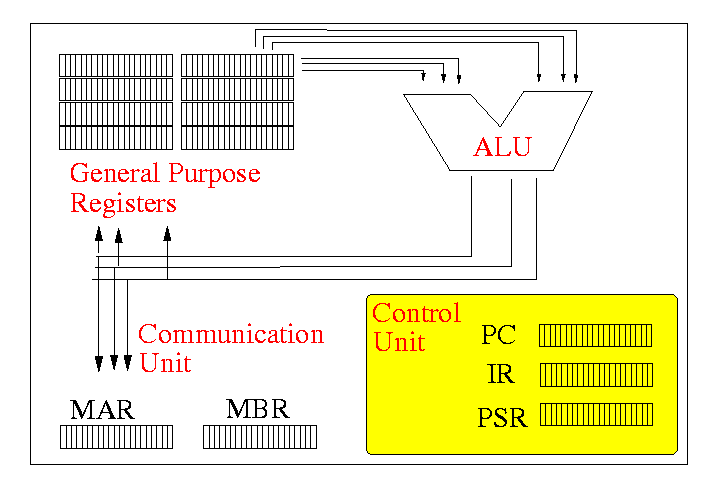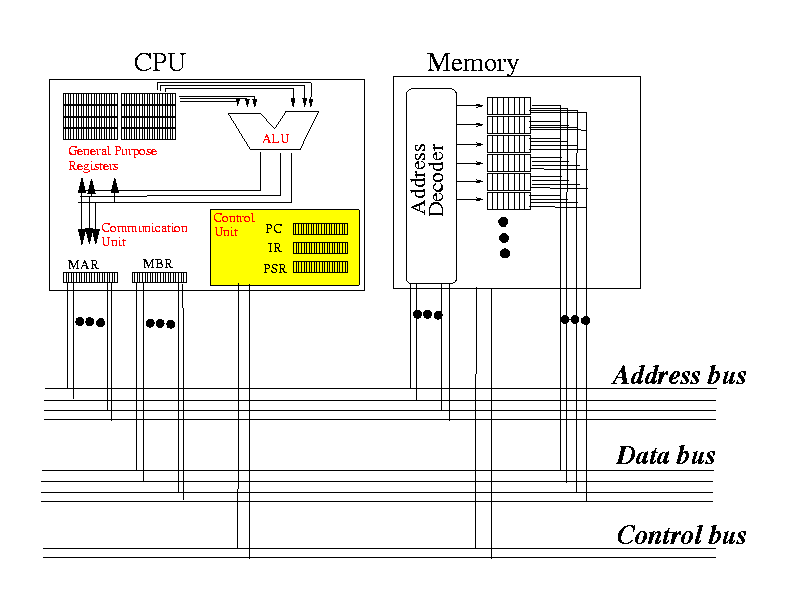
- very fast memory located inside the CPU
- is usually 10 to 50 times faster than main memory (located outside the CPU)
- used to store results of calculations
- performs arithmetic (+, -, *, /, %) and logic (AND, OR, NOT) operations
- takes input from general purpose registers and sometimes also from MBR (memory operand)
- produce output that will be stored in a general purpose register or sometimes in MBR (result is written to memory)
- certain outcome of the operation (negative, zero, overflow and carry) are stored in the condition flags in the PSR (see later)
- performs data transfer functions between CPU and main memory
- use two special purpose registers in its task
- MAR = Memory Address Register, contains the address of the memory location that the CPU wants to transfer from/to.
- MBR = Memory Buffer Register, contains the data being transferred (MBR works like a temporally transfer depot)
- controls the operation of all other components
- works like an orchestra conductor
- coordinates the registers, ALU and communication unit so that they perform their function at the right moment to achieve the correct functionality.
